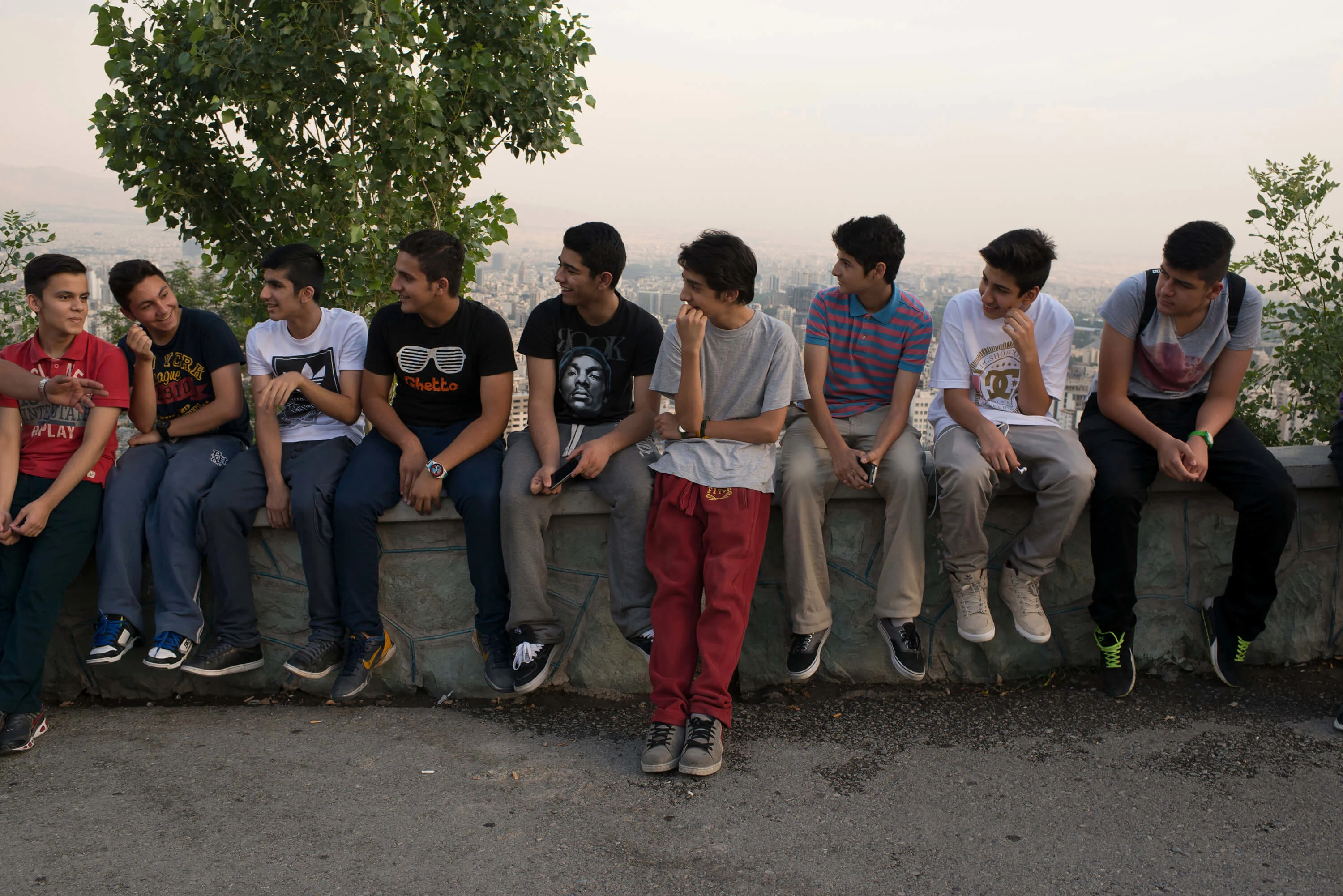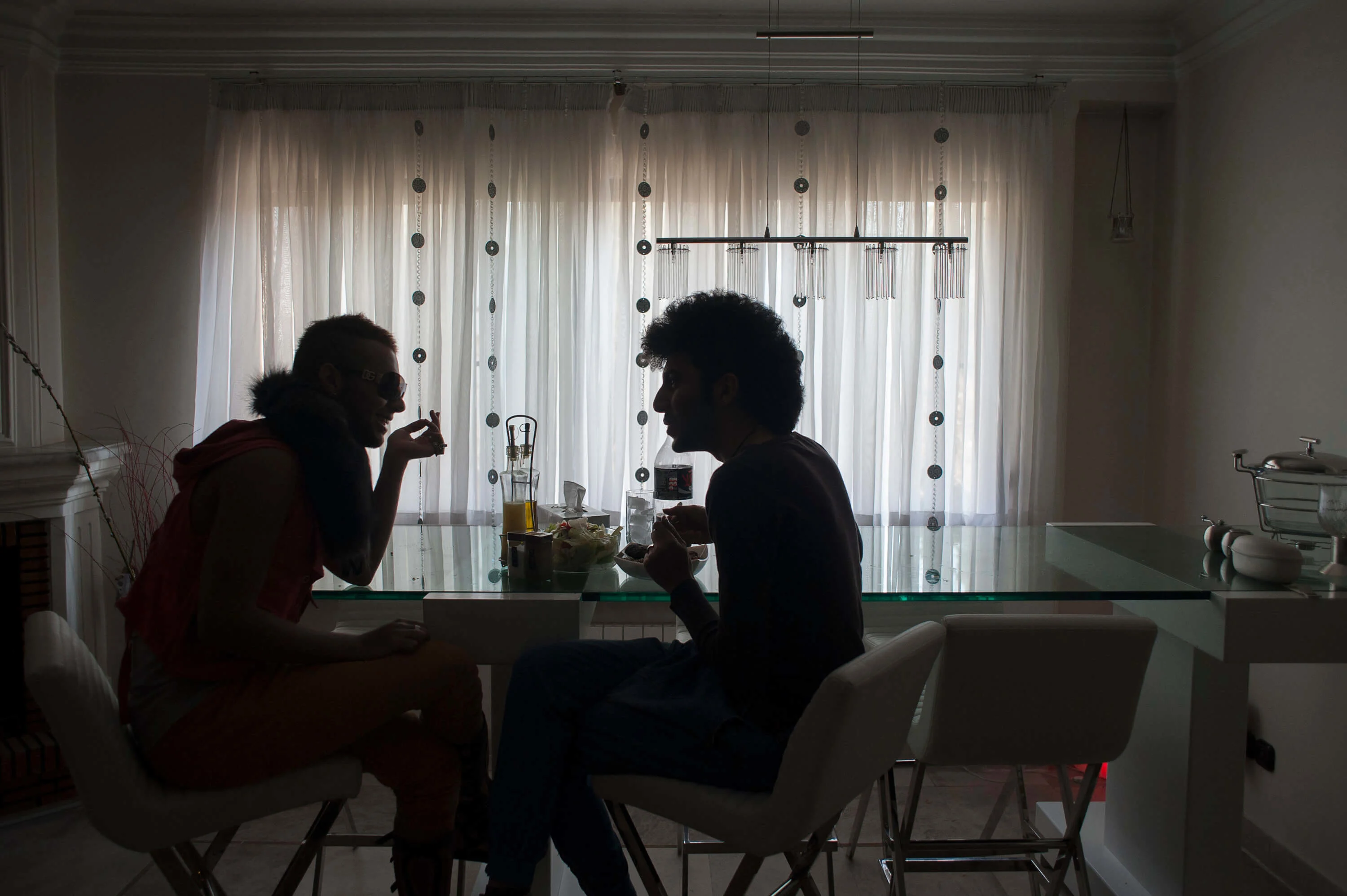
Almost every generation feels frustrated and misunderstood. But in Iran, the situation is very specific. The birth rate has fallen dramatically, the economy is struggling and young people juggle public and private lives which switch between traditional culture and the modern world.
Kamin Mohammadi speaks to photographer Kiana Hayeri, who investigates the paradoxes of life in Iran in her ongoing series about youth and family in her home country.
Referred to as the New York of the Middle East, Tehran could certainly give Manhattan a run for its money when it comes to skyscrapers, modern art galleries, glossy shopping malls and hipster cafés. With nearly nine million inhabitants – and 15 million in the Greater Tehran area – the vibrant capital of Iran could also teach New York a thing or two about population density, with an average of 1.6 people per room in houses across the city.
In the leafy northern reaches of Tehran, where wealthier residents make their homes under the peaks of the Alborz mountains, it’s easy to forget that this is Iran, with its Sharia law and ruling mullahs. Trendy coffee shops vie with each other for the custom of the gorgeous Glamazons and their bearded companions who live in this part of town.

Giant posters of the Islamic Republic’s turbaned-and-robed-founder Ayatollah Khomeini and his successor as Supreme Leader, Ayatollah Khamenei, decorate the spaghetti of motorways criss-crossing the city. Vast murals of soldiers who lost their lives in the Iran-Iraq war look down at the young people crowding cafés, shopping in malls and surreptitiously holding hands in Tehran’s verdant parks. It’s a disconnect so dramatic – the image projected by the Islamic regime and the reality of life on the ground – that sometimes it seems more like the plot of a science fiction novel than real life.
This tension – between the reality lived by many and the strictures of the regime and Islamic law – fascinates photographer Kiana Hayeri. “I’m intrigued by the complexities here,” she says of her native city, where she still lives and works.
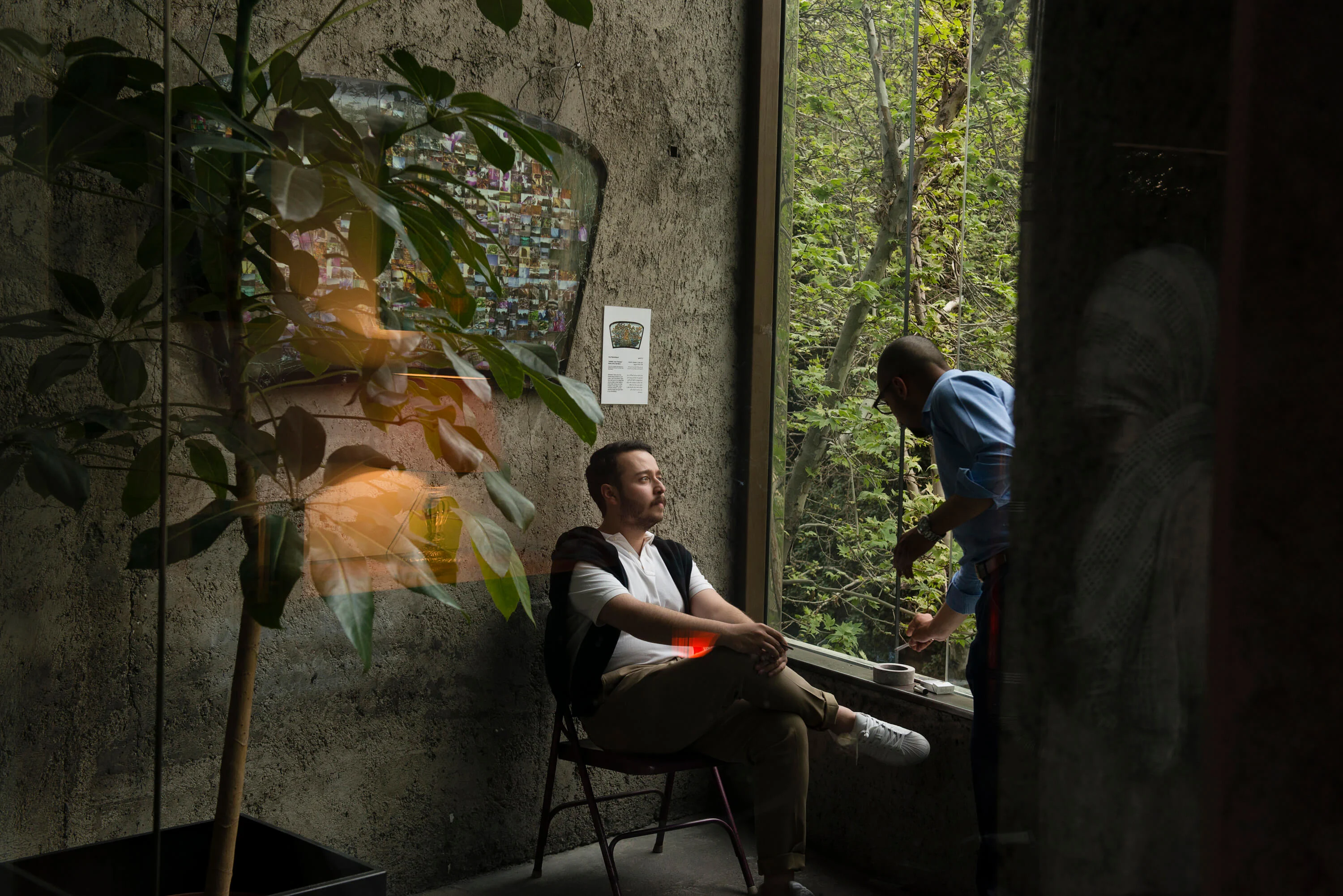
Kiana’s camera has helped her to navigate her way in the world. When she moved to Canada in the middle of high school, photography provided a way to bridge the gap in language and culture as she adapted to her new environment. And on returning to Iran, it was through photography that she tried to make sense of the complexities of modern Iran.
She was struck by the divided personas her peers adopted to switch between the outside world of religious laws and cultural traditions and their private lives.
“I have always wondered how my life would have been different if I hadn’t left Iran as a teenager,” she explains. “That’s why I first turned my camera onto my childhood friends in 2010. That was the start of a multi-phase, years-long project which expanded to youth culture in general.”
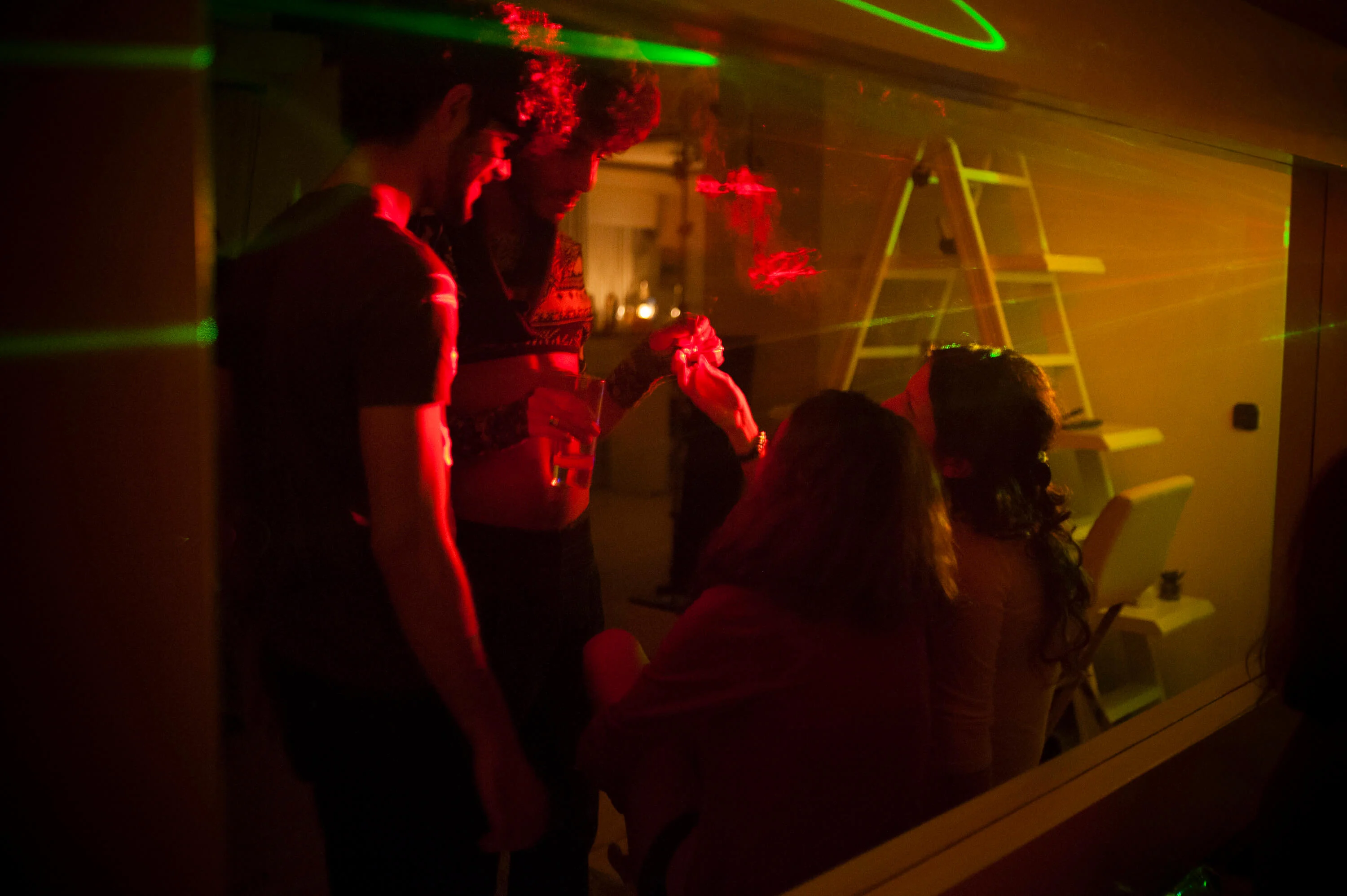
Her work is motivated by wanting to know more. “Most stories that I take on, or long-term personal projects somehow feed a curiosity about things that keep me up at night. I use my camera as a tool and as an excuse to find answers to those questions.”
For her latest series, Kiana built on her observations of Iranian young people’s parallel lives, while also dipping into the reasons behind Iran’s dramatically falling birth rate. During the baby boom of the 1980s, Iranian women gave birth to an average of seven children. Today that number has dropped to 1.4.
At the time of the Revolution in 1979, Iran had the most progressive family laws in the Middle East. But when Ayatollah Khomeini returned to Iran from exile, took power and imposed Sharia law though, the first act of his government was to abolish these enlightened rules. Following Iraq’s invasion of Iran in 1980, Ayatollah Khomeini called out for people to make larger families, and indeed, Iran’s population nearly doubled from the Revolution to the end of the war in 1988 – from 37 million in 1979 to 55 million in 1988.
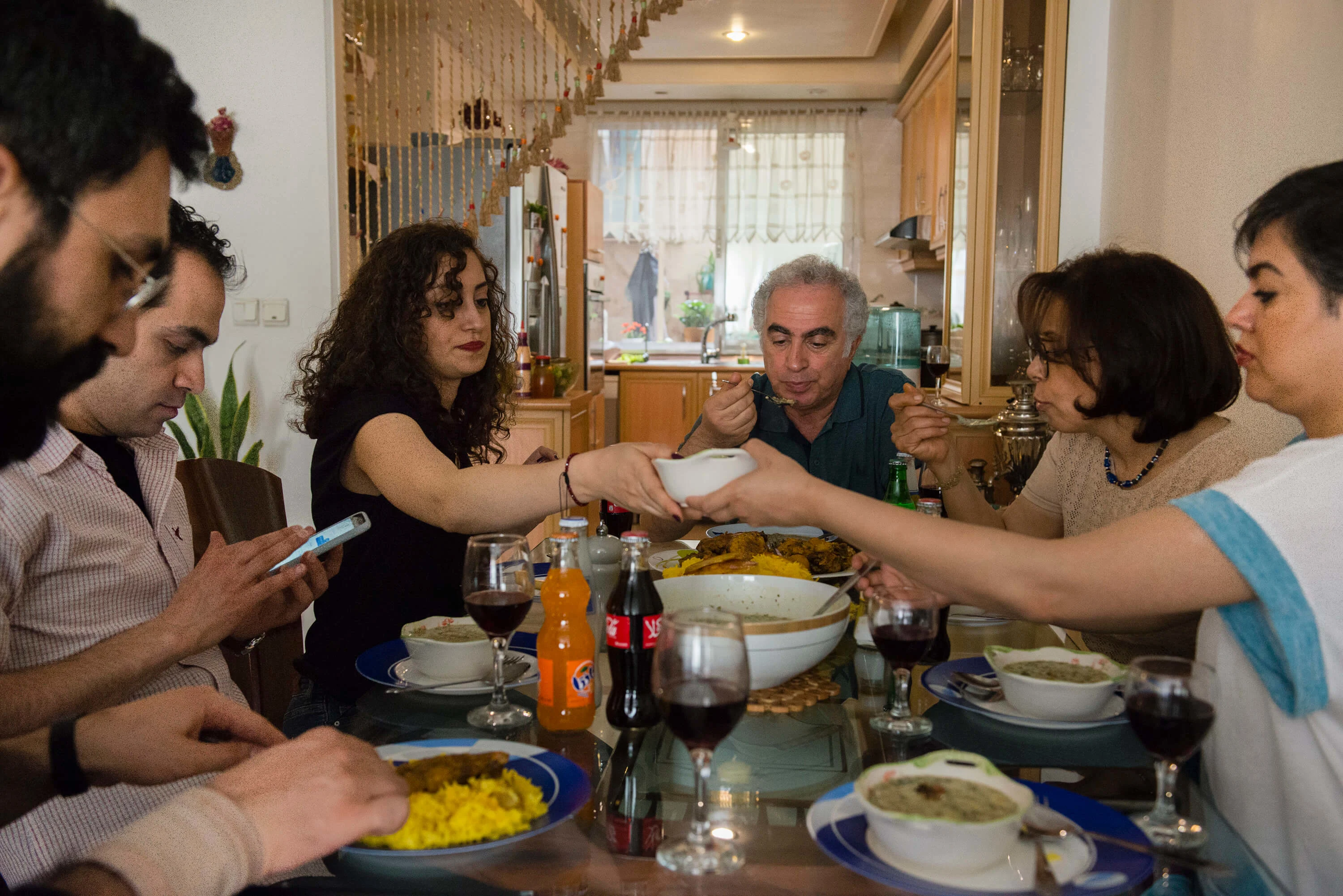
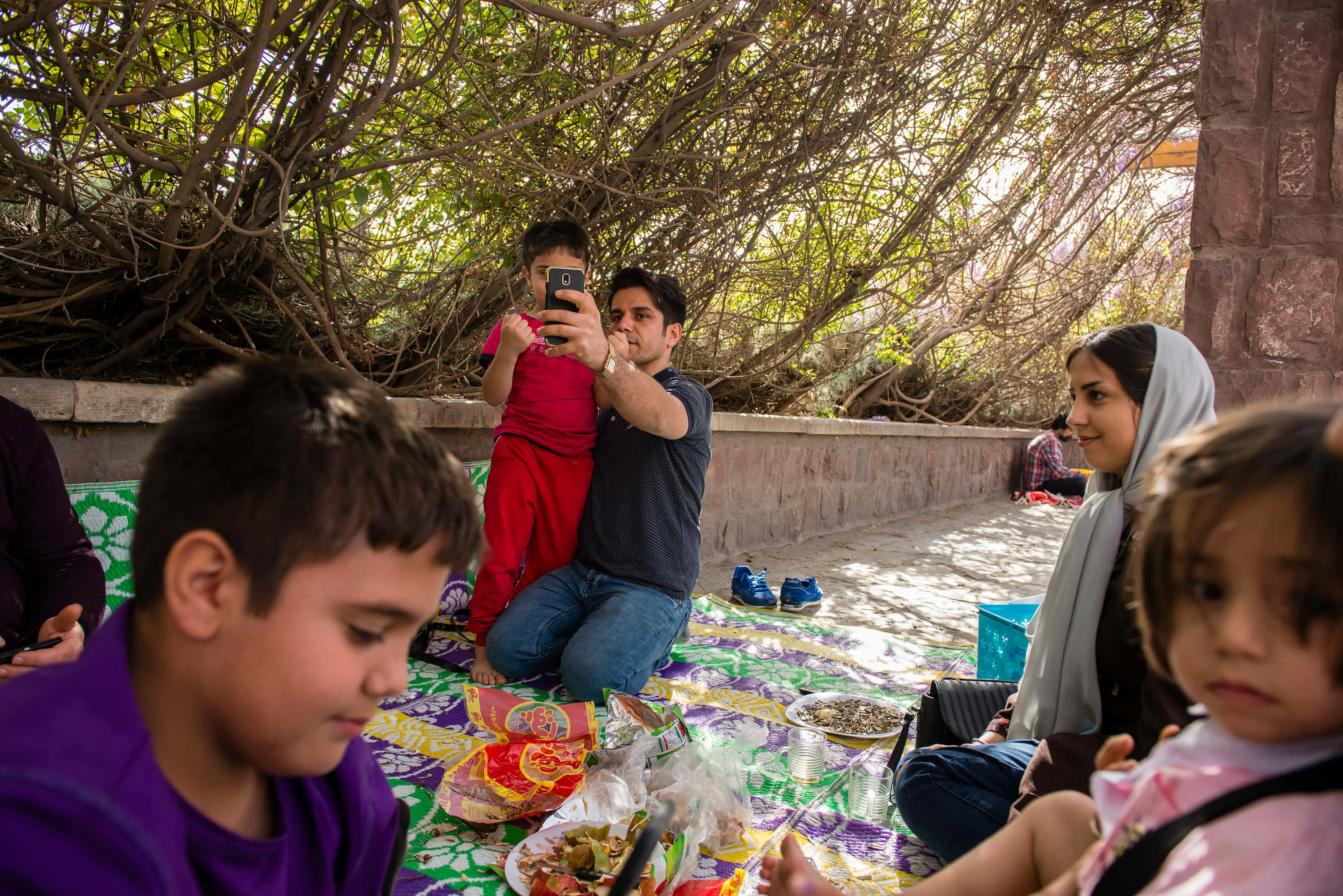
Alarmed, the Iranian regime took a different track, reintroducing a comprehensive family planning programme, offering the contraceptive pill, IUDs, sterilization and condoms for free. As a result the annual population growth slowed, from 4% to about 1.2% today (similar to the UK and the US for comparison).
Young Iranians, beset by economic crisis and fast-changing social mores, are not having children. Kiana, who just turned 30, identifies herself as part of the generation that is causing the decline in population growth. “It’s a global phenomenon, and it is not unique to Iran,” she says. “But in Iran it is for a complex and layered set of reasons, many of them different from the West, and that just makes it unique and interesting to me.”

The generation born in the 1980s and early 1990s, often called “the children of the revolution,” is a massive demographic – 70% of Iran’s population is under 40. These Iranian baby boomers have faced substantial challenges throughout their lives – getting into schools, universities and now jobs. The youth unemployment rate hit 34% in 2017.
“This generation has had to compete for everything – school places, university places, even for menial jobs,” Kiana says. “And they have also grown up exposed to the outside world through satellite television and internet, while also feeling the effects of the war. This tends to make you want to live for the moment, not to think about the future as it is so unstable.”
For this project, Kiana followed two families and various sets of friends as they came together to eat, to hang out and to travel out of the city for the Iran’s No Ruz (new year) holidays.
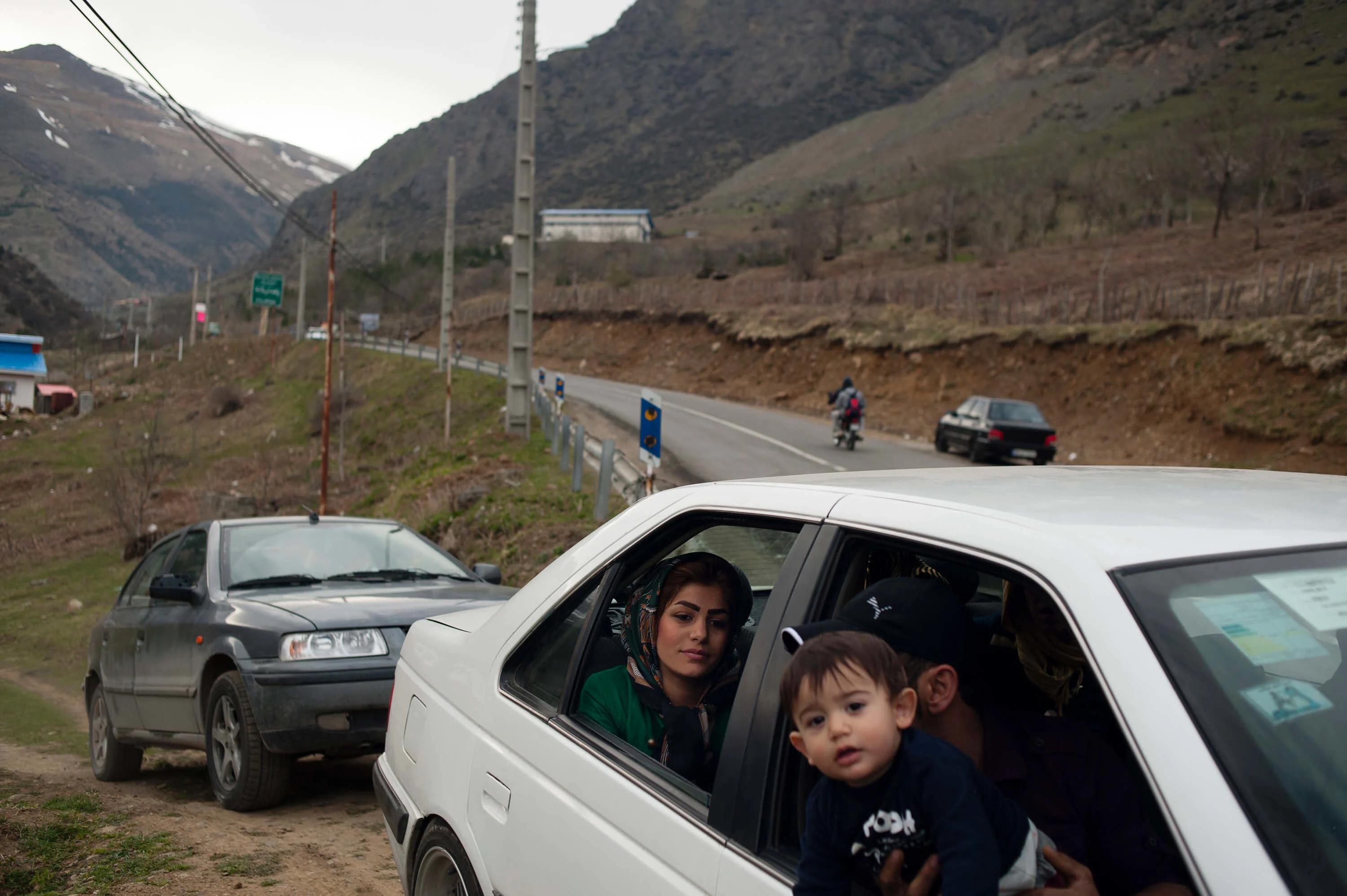
Her pictures perfectly illustrate the interesting blend of traditional and ultra-modern that Iranians constantly navigate. Families flock to Tehran’s new Ab-o-Atash park with its landscaped terraces and suspended bridge – a modern background to the very traditional Iranian family picnic. Youths don their public personas outside the house but revert to being themselves at home or at private parties. Kiana captures the clear division between private and public life, with car windows or open doorways that are there to be looked through. They allow our gaze to mark the difference between the outside and the inside of her subjects’ lives.
Ambiguity pervades many of her images too. We see a young man selling woven baskets in an alleyway so narrow he is hunched in on himself, a youth in half shadow staring out of a car window, his eyes shaded by enormous sunglasses.
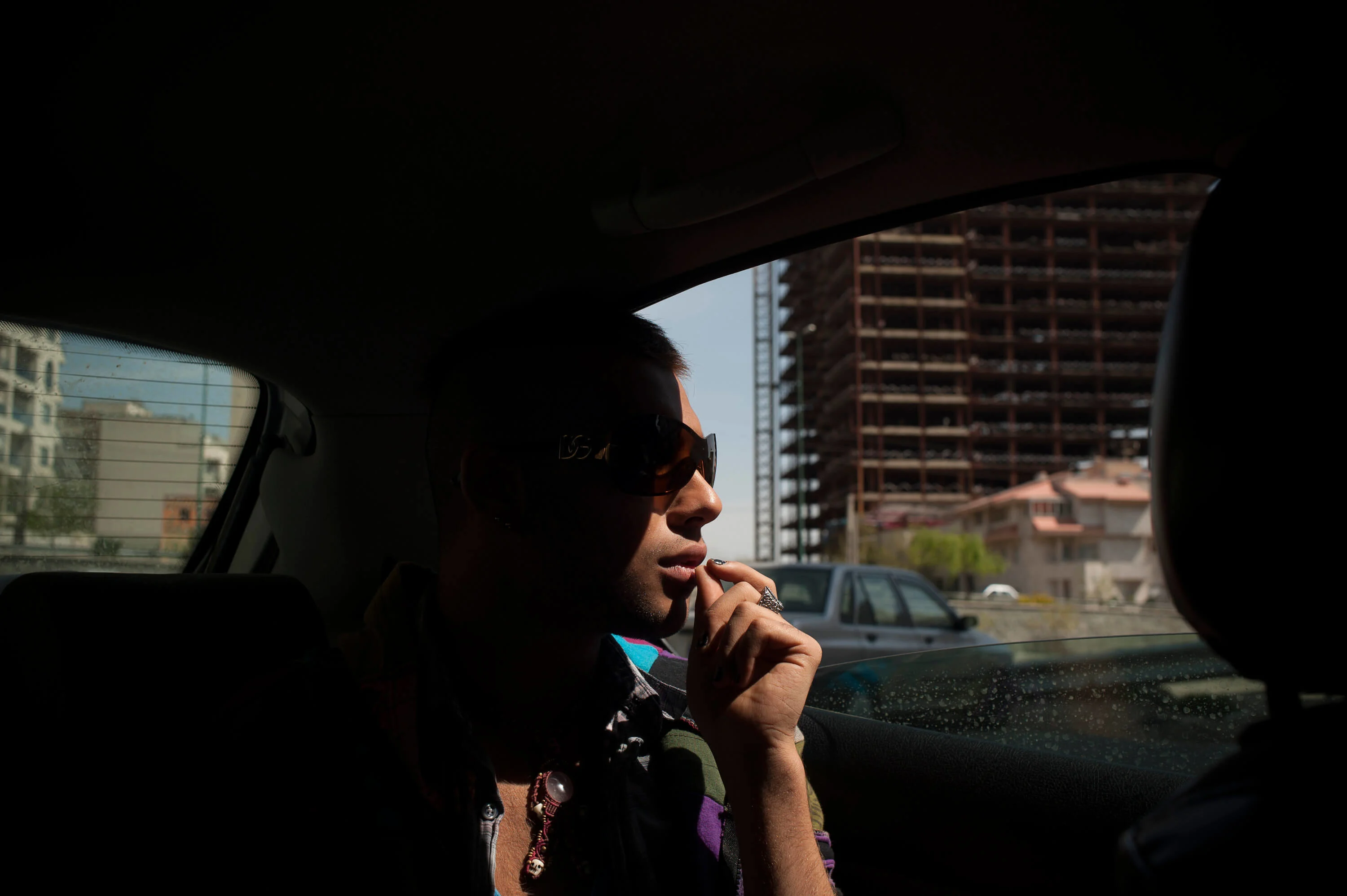
Kiana also captures the layers of complexity in her peers’ decision to postpone – and even reject – having children. In many of her photos, there is the sense of urgent conversation, of important matters being discussed.
To boost the birth rate, the government has produced huge billboard ads which show large, happy families, juxtaposed with sad, smaller families. It is debatable if policies like these can work in the face of the free falling economy. Decades of international sanctions, mismanagement and corruption have inflicted terrible damage.
In her striking images, Kiana beautifully explores these tensions: from adopting pets instead of having babies, to the various responses to political instability and financial difficulty. Most of all, her images of Iranian youth serve to humanize a highly-educated and frustrated population that is little known and understood outside of Iran.
